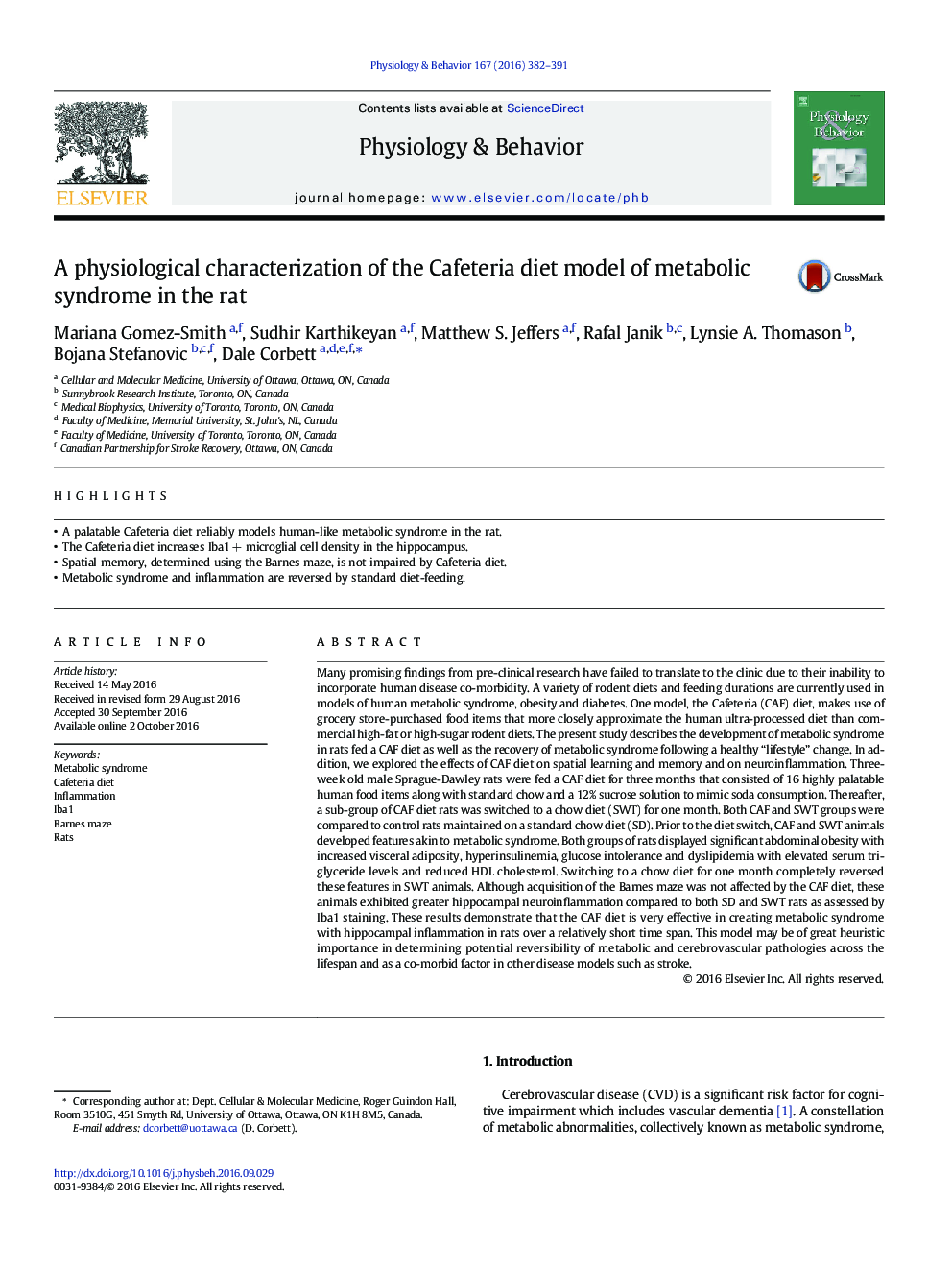| کد مقاله | کد نشریه | سال انتشار | مقاله انگلیسی | نسخه تمام متن |
|---|---|---|---|---|
| 5922553 | 1571152 | 2016 | 10 صفحه PDF | دانلود رایگان |
- A palatable Cafeteria diet reliably models human-like metabolic syndrome in the rat.
- The Cafeteria diet increases Iba1Â + microglial cell density in the hippocampus.
- Spatial memory, determined using the Barnes maze, is not impaired by Cafeteria diet.
- Metabolic syndrome and inflammation are reversed by standard diet-feeding.
Many promising findings from pre-clinical research have failed to translate to the clinic due to their inability to incorporate human disease co-morbidity. A variety of rodent diets and feeding durations are currently used in models of human metabolic syndrome, obesity and diabetes. One model, the Cafeteria (CAF) diet, makes use of grocery store-purchased food items that more closely approximate the human ultra-processed diet than commercial high-fat or high-sugar rodent diets. The present study describes the development of metabolic syndrome in rats fed a CAF diet as well as the recovery of metabolic syndrome following a healthy “lifestyle” change. In addition, we explored the effects of CAF diet on spatial learning and memory and on neuroinflammation. Three-week old male Sprague-Dawley rats were fed a CAF diet for three months that consisted of 16 highly palatable human food items along with standard chow and a 12% sucrose solution to mimic soda consumption. Thereafter, a sub-group of CAF diet rats was switched to a chow diet (SWT) for one month. Both CAF and SWT groups were compared to control rats maintained on a standard chow diet (SD). Prior to the diet switch, CAF and SWT animals developed features akin to metabolic syndrome. Both groups of rats displayed significant abdominal obesity with increased visceral adiposity, hyperinsulinemia, glucose intolerance and dyslipidemia with elevated serum triglyceride levels and reduced HDL cholesterol. Switching to a chow diet for one month completely reversed these features in SWT animals. Although acquisition of the Barnes maze was not affected by the CAF diet, these animals exhibited greater hippocampal neuroinflammation compared to both SD and SWT rats as assessed by Iba1 staining. These results demonstrate that the CAF diet is very effective in creating metabolic syndrome with hippocampal inflammation in rats over a relatively short time span. This model may be of great heuristic importance in determining potential reversibility of metabolic and cerebrovascular pathologies across the lifespan and as a co-morbid factor in other disease models such as stroke.
Journal: Physiology & Behavior - Volume 167, 1 December 2016, Pages 382-391
